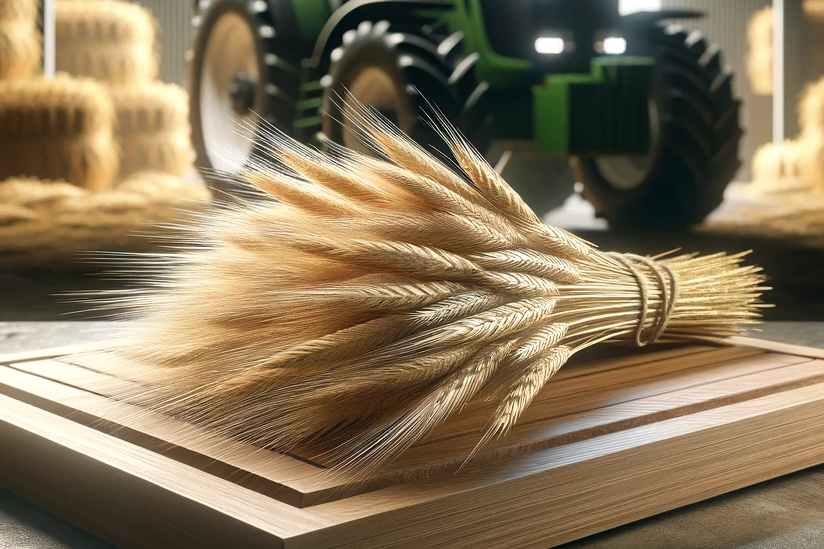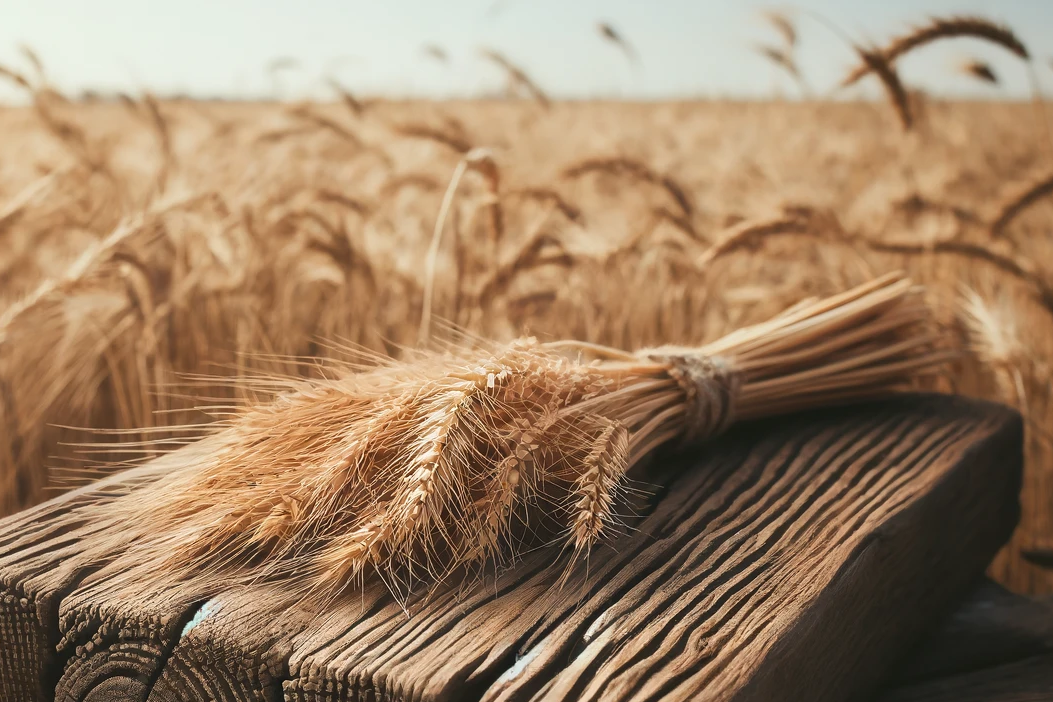Wheat straw
When it comes to the health and well-being of our dogs, we are always looking for safe, natural and nutritious options. One ingredient that may not immediately spring to mind, but can offer some interesting benefits, is wheat straw. This seemingly simple by-product of the wheat harvest may hold more benefits for our four-legged friends than meets the eye. In this article, we explore what wheat straw is, highlight its potential benefits for dogs and also discuss possible disadvantages.
What is wheat straw?
Wheat straw is the dry stalk material that remains after wheat grains have been harvested. It is often used in agriculture as bedding for animals or as a raw material for the production of paper, packaging materials and even in the construction industry. But beyond its traditional uses, wheat straw is now finding its way into the nutrition and management of pets, including dogs.
Wheat straw in dog grooming
Wheat straw can be part of dog care and nutrition in various forms. It can be used as natural bedding or as filling material for dog beds, but also offers nutritional benefits when incorporated into the diet in small amounts.
Benefits of wheat straw for dogs
Despite its simplicity, wheat straw offers some benefits that could make it a consideration for dog owners.
Natural bedding and environmental design
- Hypoallergenic: Wheat straw is considered less allergenic compared to other bedding materials, making it a good choice for dogs with allergies.
- Comfort: As bedding, it provides a soft, absorbent base that can improve comfort and hygiene in the dog's sleeping or resting area.
Nutritional benefits
- Fiber: In small amounts, wheat straw can be a source of fiber, which supports intestinal health and contributes to healthy digestion.
- Natural chewing activity: Chew sticks or toys that contain wheat straw can contribute to dental health and satisfy a dog's natural chewing instinct.
Possible disadvantages and considerations
While wheat straw offers some benefits, there are also potential drawbacks and considerations that should be taken into account.
Digestive problems
- Risk of intestinal obstruction: Too much wheat straw can lead to digestive problems or even intestinal obstruction, especially in small dogs.
- Low in nutrients: Wheat straw offers little to no nutritional value and should not be considered a main component of the diet.
Allergic reactions
- Although considered hypoallergenic, some dogs may still be allergic to wheat straw, especially if they are sensitive to wheat or similar substances.
Environmental considerations
- Origin and treatment: The quality and safety of wheat straw depends on its origin and treatment. It is important to ensure that the wheat straw used is free from chemicals and contaminants.
A well-considered choice
Wheat straw can be an interesting addition to a dog's care and diet, whether as natural bedding, to promote gut health or as an activity material. As with any supplement or change in your dog's routine, it is important to consider your dog's individual needs and reactions. Used in moderation and with caution, wheat straw can be a natural and beneficial supplement for your dog's well-being.
If you notice any signs of hypersensitivity or poisoning in your dog, you should see your vet immediately. We are not a substitute for a vet, but we try to be as accurate as possible. Every dog reacts differently and we recommend you get a second opinion or consult your vet if in doubt.
Stay healthy and take good care of your four-legged friend!😊
Similar to Wheat straw
Barley straw is a by-product of the barley harvest and consists of the dry stalks of the plant that remain after the grain has been removed. It is often used in agriculture as bedding for animals,...
Oat straw consists of the stems, leaves and flowers of the oat plant, which are dried after the grains have been harvested. It contains many valuable ingredients such as flavonoids, saponins,...
Corn stover consists of the dried stalks of the corn plant that remain after the corn cobs have been harvested. It is often used as bedding in livestock farming, but is also used as a mulching...
Rye straw is a by-product that remains after the harvesting of rye grains. It consists of the dry stalks of rye plants. While rye is primarily grown for human consumption, the straw is used in a...



